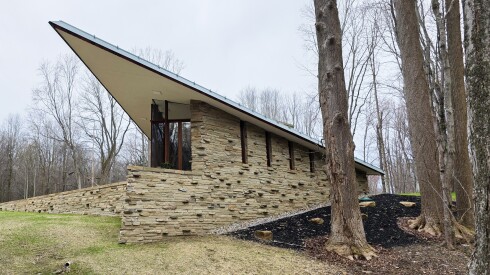Opened in 2001, the Apartheid Museum powerfully—and extensively—documents the rise and fall of racial segregation in South Africa. Constructed on a 16-acre plot of land, the museum features a unique design—as you head through the gates, for example, you’ll notice separate entrances for whites and blacks. It’s quite an interesting way to start your voyage through the history of apartheid. The back gardens were designed by Patrick Watson and feature an impressive sculpture by William Kentridge. For anyone wanting to better understand apartheid, a visit to this moving museum is a must when in Johannesburg.
More Recommendations
View of the CBD from the Apartheid Museum
Outside the back of the Apartheid Museum, they have a beautiful patch of Highveld with a pretty good view of the Joburg skyline. Of course, you also get the roller coaster from Gold Reef City...
World on its Hind Legs
A beautiful collaboration between William Kentridge and Gerhard Marx outside the Apartheid Museum.
Apartheid Museum grounds
The interior of the Apartheid Museum is powerful and sobering, but step outside in to the adjacent ‘veld’ (Afrikaans for ‘field’) and you’ll lose yourself in the equally powerful beauty of the landscape.
October 8, morning: Private Access to Apartheid Museum
We’ll gain exclusive access to the celebrated Apartheid Museum where we’ll hear from our first speaker, John Kani, notable playwright, director, actor and activist whose award-winning body of work addressed major issues of the apartheid movement. Afterwards, with the museum all to ourselves, we’ll break into small groups for an informative and eye opening guided tour of the plethora of artifacts, photographs and archival information that powerfully illustrate the emotional story of South Africa’s dark history.
October 8, lunch: Highveld at the Apartheid Museum
We’ll offer some levity to balance out the morning with a sunny lunch at the Museum’s adjacent exquisitely designed and beautifully landscaped highveld, with a special guest appearance by its architect, Patrick Watson.
Apartheid (Apart Hate) Museum
Visiting the Apartheid Museum is a haunting, but essential experience to understand South Africa’s recent history. It is one of the most powerful museums I have been to. Although at times deeply shocked with the insane inhumanity of it all, I left with newfound compassion for the South African people, and hope for the country. The museum’s tagline nails it: ‘Apartheid is exactly where it belongs–in a museum’. Don’t rush your visit. There’s much to see, experience and learn.
“For to be free is not merely to cast off one’s chains, but to live in a way that respects and enhances the freedom of others.” –Nelson Mandela
October 8, morning: Speaker Session, Apartheid Museum
We’ll get special, exclusive access to the celebrated Apartheid Museum where we’ll hear from our first speaker, John Kani, notable playwright, director, actor and activist whose award-winning body of work addressed major issues of the apartheid movement. Afterwards, with the museum all to ourselves, we’ll break into small groups for an informative and eye opening guided tour of the plethora of artifacts, photographs and archival information that powerfully illustrate the emotional story of South Africa’s dark history.
October 8, lunch: Apartheid Museum Highveld
After the intense experience of the Museum, we’ll lighten things up with a sunny picnic lunch at the Museum’s adjacent exquisitely designed and beautifully landscaped highveld, with a special guest appearance by its famed landscape architect, Patrick Watson.
Jumping the gigantic stairs at the Apartheid Museum
Our kids adored this museum for its outside features, which allowed my husband and me time to split up and take in the deeper insides. Trading off is a great way for families traveling the world with young kids to fully enjoy and appreciate the travel- when museums like the Apartheid Museum exist, with their clever landscaping and well crafted exhibits, this is all the easier. Our kids did take in some of the greater messages as well, and did so without complaint as they were able to take breaks to have fun.























